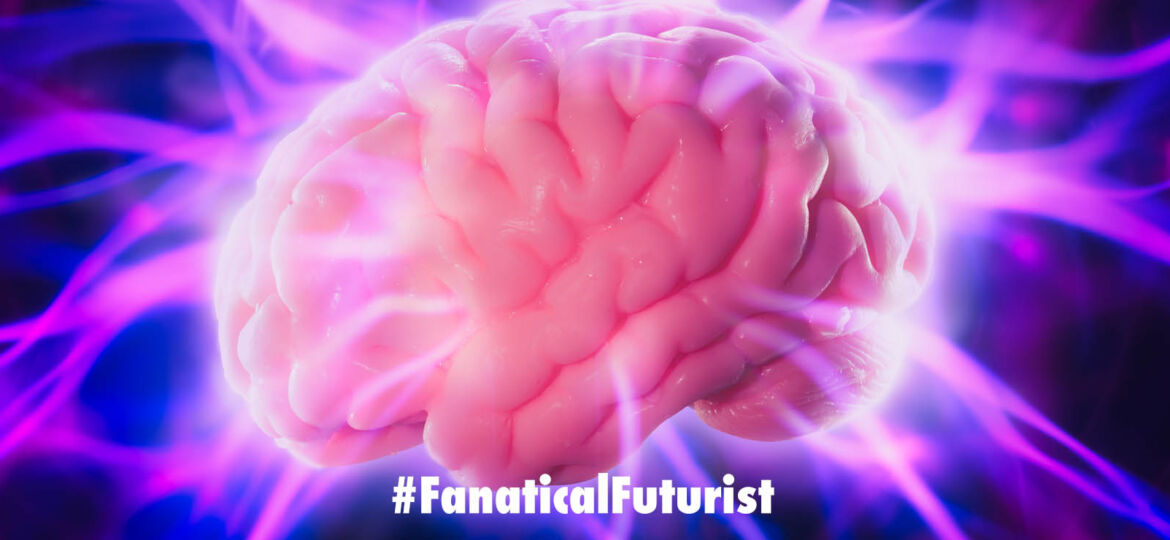
WHY THIS MATTERS IN BRIEF
Quantum sensors are so sensitive they can pick up the faintest brain activity, today this will help diagnose dementia faster, tomorrow it could read your mind from across the room.
 Love the Exponential Future? Join our XPotential Community, future proof yourself with courses from XPotential University, read about exponential tech and trends, connect, watch a keynote, or browse my blog.
Love the Exponential Future? Join our XPotential Community, future proof yourself with courses from XPotential University, read about exponential tech and trends, connect, watch a keynote, or browse my blog.
Quantum sensors are millions of times more sensitive than any other kind of sensors that we have today which makes them ideal for detecting hidden tunnels deep beneath ground, replacing the global GPS satellite system, and many other applications. They could also by the looks of it help eliminate the need for the antiquated Brain Machine Interface (BMI) caps we see people wearing and make it possible to read peoples minds and brain patterns from across the room which, for example, would be very useful in airport settings to remotely identify potential terrorists, as well as all manner of other use cases. And if that sounds odd, we’ve already demonstrated the ability to read peoples brainwaves, have them analysed by AI and then stream those thoughts to TV’s.
Now, after the latest quantum experiment researchers have shown that quantum sensors could help doctors identify brain diseases such as dementia, ALS and Parkinson’s, by using them to remotely and non-invasively spot a slowing in the speed at which signals travel across patients brains.
The research findings from a paper led by University of Sussex quantum physicists was published in Scientific Reports journal.
The quantum scanners as the team have called them can detect the tiniest magnetic fields generated when neurons fire. Then, measuring moment-to-moment changes in the brain, they track the speed at which signals move across the brain. This time-element is important because it means a patient could be scanned twice several months apart to check whether the activity in their brain is slowing down. Such slowing can be a sign of Alzheimer’s or other diseases of the brain.
In this way, the technology introduces a new method to spot biomarkers of early health problems.
Aikaterini Gialopsou, a doctoral researcher in the School of Mathematical and Physical Sciences at the University of Sussex and Brighton and Sussex Medical School is the lead author on the paper. She says of the discovery:
“We’ve shown for the first time that quantum sensors can produce highly accurate results in terms of both space and time. While other teams have shown the benefits in terms of locating signals in the brain, this is the first time that quantum sensors have proved to be so accurate in terms of the timing of signals too.
“This could be really significant for doctors and patients concerned with the development of brain disorders.”
These quantum sensors are believed to be much more accurate than either EEG or fMRI scanners, due in part to the fact that the sensors can get closer to the skull. The closer proximity of the sensors to the brain can not only improve the spatial, but also the temporal resolution of the results. This double improvement of both time and space accuracy is highly significant as it means brain signals can be tracked in ways that are inaccessible to other types of sensors.
“It’s the quantum technology which makes these sensors so accurate,” explains Professor Peter Kruger, who leads the Quantum Systems and Devices lab at the University of Sussex. He adds:
“The sensors contain a gas of rubidium atoms. Beams of laser light are shone at the atoms, and when the atoms experience changes in a magnetic field, they emit light differently. Fluctuations in the emitted light reveal changes in the magnetic activity in the brain. The quantum sensors are accurate within milliseconds, and within several millimetres.”
The technology behind the scanners is called magnetoencephalography (MEG). Combining MEG tech with these new quantum sensors has developed a non-invasive way to probe activity in the brain. Unlike existing brain scanners – which send a signal into the brain and record what come back – MEG passively measures what is occurring inside from the outside, eliminating the health risks currently associated for some patients with invasive scanners.
Currently MEG scanners are expensive and bulky, making them challenging to use in clinical practice. This development of quantum sensor technology could be crucial for transferring the scanners from highly controlled laboratory environments into real-world clinical settings.
“It’s our hope with this development” adds Gialopsou. “That in discovering this enhanced function of quantum brain scanners the door is opened to further developments that could bring about a quantum revolution in neuroscience. This matters because, although the scanners are in their infancy, it has implications for future developments that could lead to crucial early diagnosis of brain diseases, such as ALS, MS and even Alzheimer’s. That’s what motivates us as a team.”

















Great post!
I was wondering what is the Scientific Reports journal published by University of Sussex?
Continue the good work!
Hi Brian here’s the original news article for you: https://www.sussex.ac.uk/broadcast/read/56791
Happy reading!